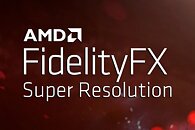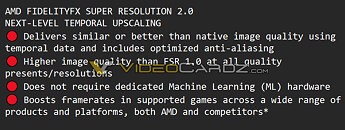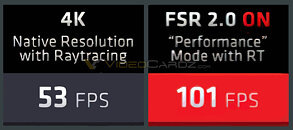AMD is preparing to announce their FidelityFX Super Resolution (FSR) successor tomorrow, on March 17th before a showcase of the technology at GDC 2022 as we previously reported on according to leaked slides obtained by VideoCardz. AMD FSR 2.0 will use temporal data and optimized anti-aliasing to improve image quality in all presents and resolutions compared to its predecessor making it a worthy component against NVIDIA DLSS 2.0. The slides also confirm that FSR 2.0 doesn't require dedicated machine learning hardware acceleration and will be compatible with a "wide range of products and platforms, both AMD and competitors".
The technology has been implemented in Deathloop where FSR 2.0 "Performance" mode with ray tracing increased frame rates from 53 FPS to 101 FPS compared to 4K native resolution with ray tracing. The slides do not reveal if AMD will make the source code for FSR 2.0 open-source as they have done for FSR and Intel is planning to do with XeSS. AMD is also expected to release Radeon Super Resolution which is an FSR driver implementation available for all games on March 17th.



View at TechPowerUp Main Site | Source
The technology has been implemented in Deathloop where FSR 2.0 "Performance" mode with ray tracing increased frame rates from 53 FPS to 101 FPS compared to 4K native resolution with ray tracing. The slides do not reveal if AMD will make the source code for FSR 2.0 open-source as they have done for FSR and Intel is planning to do with XeSS. AMD is also expected to release Radeon Super Resolution which is an FSR driver implementation available for all games on March 17th.



View at TechPowerUp Main Site | Source







